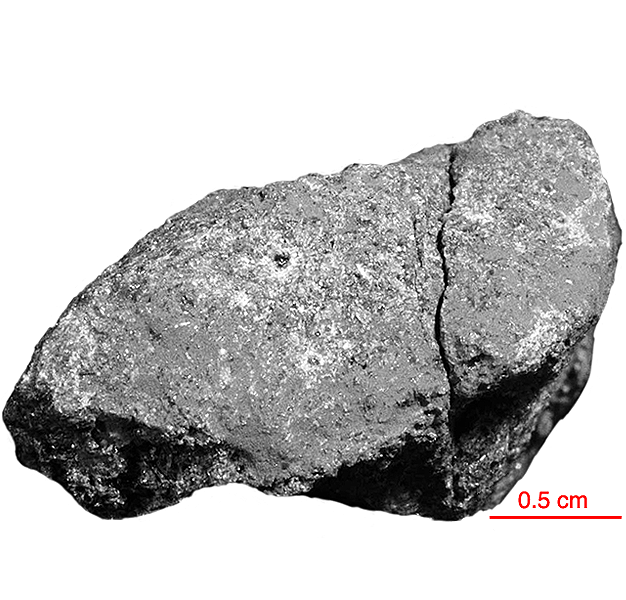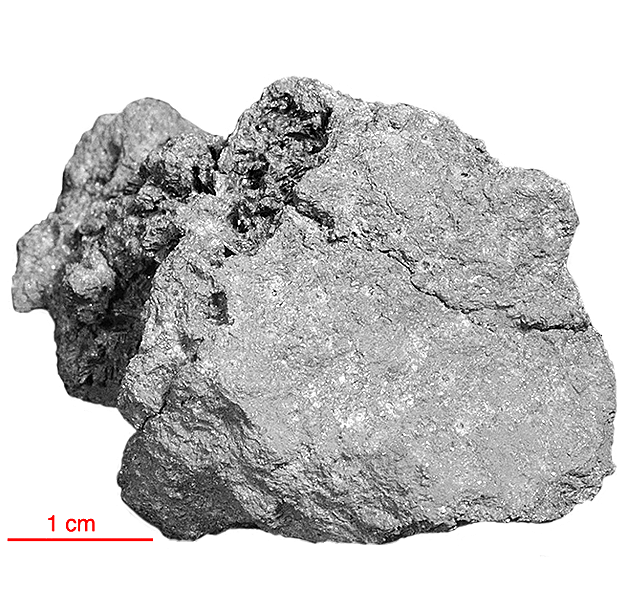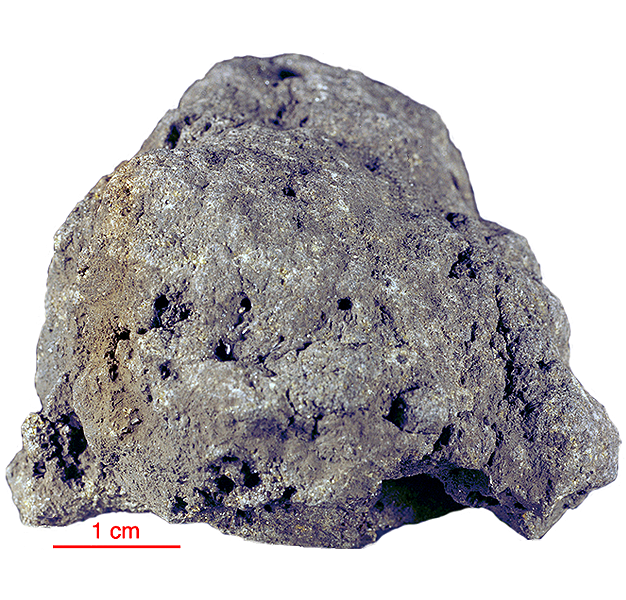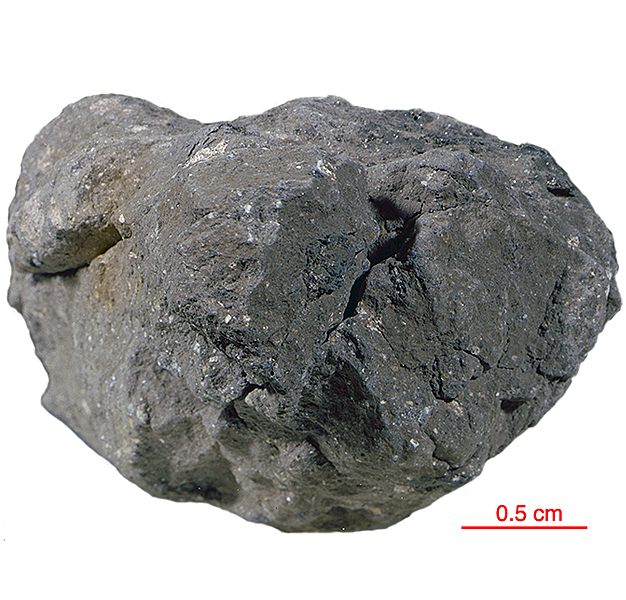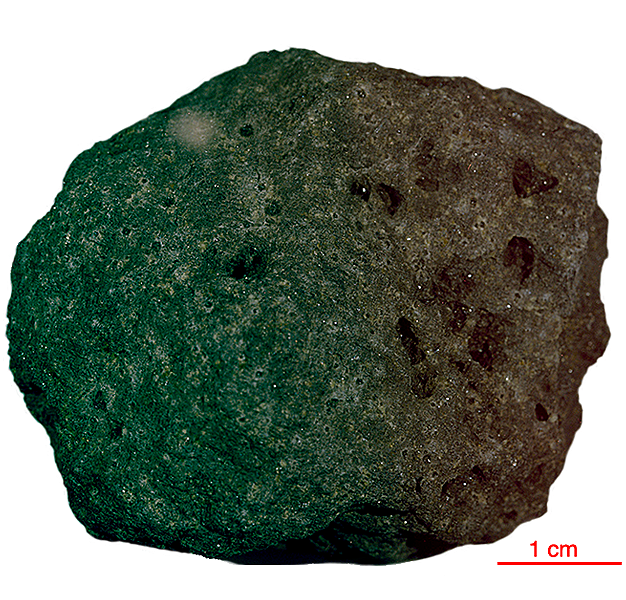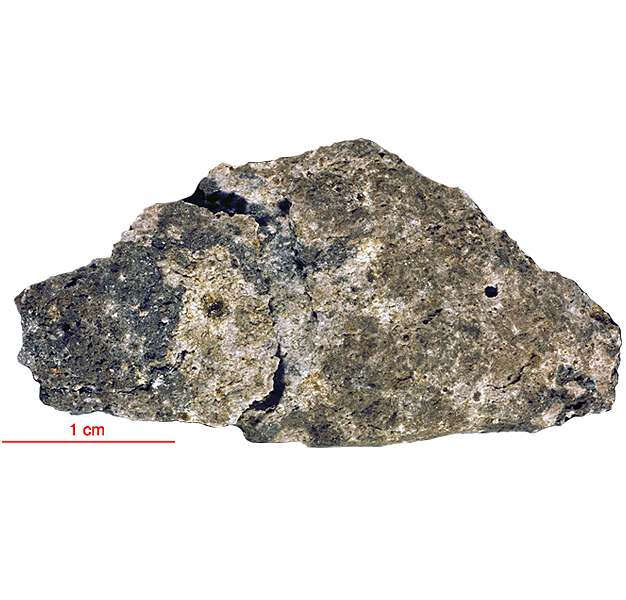
Fact sheet
12013 is a unique lunar sample that is best interpreted as a complex mixture of two polymict breccias. One is black and aphanitic and the other is mottled grey and white. There is sometimes a distinct boundary between these two general lithologies. The black breccia is generally basaltic in composition, whereas the grey and white lithology is generally silica and potassium rich. Large vugs can be seen in the bulk rock, and numerous small vesicles are seen in thin sections of the black lithology. The groundmass of the black breccia is a fine-grained intergrowth of plagioclase, pyroxene, ilmenite and phosphate minerals. The clast population is dominated by fragments of plagioclase, quartzofeldspathic rocks and norite. These clasts have not equilibrated with the groundmass. The chemical composition of the black breccia lithology is generally similar to KREEP basalt.
The grey and white portion is generally granitic in composition, but includes clasts, felsite, basalt and gabbro. The grey breccia lithology includes felsite, quartzofeldspathic rock as large clasts that partially melted and recrystallized. Granitic melt locally migrated to fill intersticies and is now a fine-grained intergrowth of K-feldspar and silica.
The sample weighed 82.3 grams before analysis and has been dated at 4.03±0.07 billion years (Ar/Ar).
Further details of this and other Apollo samples are here: http://curator.jsc.nasa.gov/lunar/
Our thin section has previously been gold coated in preparation for analysis. Unfortunately some of this gold coat still resides in crevices within the sample.
Apollo 12 returned 34 kilograms of samples, including 45 rocks, samples of lunar 'soil', and several core tubes that included material from as much as 40 centimetres below the lunar surface.
Apollo 12 rocks were almost all basalts, with only two breccias in the returned samples. The basalts at the Apollo 12 site formed 3.1 to 3.3 billion years ago, roughly 500 million years later than the Apollo 11 basalts. Overall, there is much less of the element titanium in the Apollo 12 samples than in the Apollo 11 samples, which explains the more reddish colour of this region. The differences in age and chemical composition between the Apollo 11 and Apollo 12 samples demonstrate that mare volcanism did not occur as a single, Moon-wide melting event.
Apollo 12 was launched on 14 November 1969.

